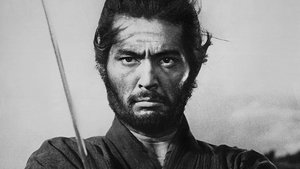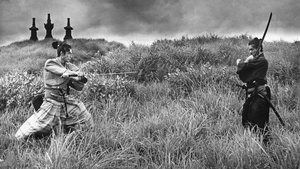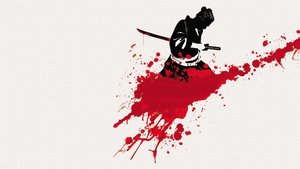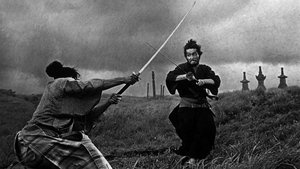Video Sources 0 Views
- Watch trailer
- Harakiri 1962 Colorized

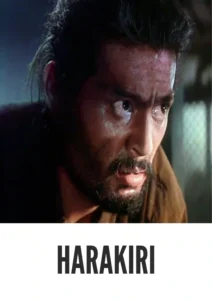
Synopsis
Table of Contents
Toggle
Immerse yourself in the stark beauty and emotional depth of Harakiri, a 1962 Japanese jidaigeki film directed by Masaki Kobayashi, now masterfully colorized to bring new life to this cinematic masterpiece. Set in 17th-century Japan, during the Edo period, the film follows the journey of Hanshirō Tsugumo, a rōnin who arrives at the manor of the Iyi clan seeking to commit seppuku. This HD download allows you to experience the gripping narrative, compelling performances, and powerful themes of honor, revenge, and social injustice in a visually enhanced format.
In 1630, rōnin Tsugumo Hanshirō arrives at the Iyi clan’s estate, requesting to perform seppuku in their courtyard. Saitō Kageyu, the daimyō’s senior counselor, attempts to dissuade him by recounting the story of Chijiiwa Motome, another rōnin from the same clan.
Motome, desperate for money, had hoped to receive alms by requesting seppuku. Instead, the Iyi clan forced him to follow through with the ritual using his own bamboo sword, resulting in a slow, agonizing, and humiliating death. Despite this grim warning, Hanshirō insists on his sincere desire to commit seppuku.
As the ceremony is about to begin, Hanshirō names the three samurai who coerced Motome’s suicide as his chosen executioners. When they all feign illness to avoid attending, Hanshirō recounts his life story, revealing his connection to Motome.
In 1619, Hanshirō’s clan was abolished, and he became responsible for Motome, his friend’s son. To support Motome, his daughter Miho, and later his grandson Kingo, Hanshirō worked as a craftsman. Motome and Miho married, but tragedy struck when Miho and Kingo fell ill. Desperate, Motome attempted to borrow money but was instead brutally forced to commit seppuku by the Iyi clan. Soon after, Miho and Kingo died, leaving Hanshirō with nothing.
Hanshirō explains that his final wish is to join his loved ones in death, but he seeks justice for their suffering. He asks Saitō for a statement of regret to convey to Motome, Miho, and Kingo. When Saitō refuses, Hanshirō reveals that he has already taken revenge by humiliating the samurai responsible for Motome’s death, cutting off their topknots.
Enraged, Saitō orders his men to kill Hanshirō. In a fierce battle, Hanshirō defeats numerous samurai and destroys the clan’s ancestral armor, symbolizing the corruption of their honor. Ultimately, he is killed by gunfire as he commits seppuku, a tragic end to a samurai’s quest for justice.
The film features a stellar cast, bringing depth and nuance to their roles:
-
Tatsuya Nakadai as Tsugumo Hanshirō
-
Rentarō Mikuni as Saitō Kageyu
-
Akira Ishihama as Chijiiwa Motome
-
Shima Iwashita as Tsugumo Miho
-
Tetsurō Tamba as Omodaka Hikokuro
Harakiri is a powerful samurai drama that explores themes of honor, revenge, and social injustice. It is considered a masterpiece of Japanese cinema.
Released in 1962, Harakiri provides a critical perspective on the samurai code of bushido and the social changes occurring during the Edo period. The film reflects the struggles of rōnin, masterless samurai, who faced poverty and discrimination in a society that increasingly valued conformity over individual honor. Harakiri challenges the romanticized image of the samurai, exposing the hypocrisy and brutality that could exist beneath the surface of tradition.
This colorized version of Harakiri has been meticulously restored using advanced digital techniques, enhancing the visual impact while preserving the film’s original atmosphere. The colorization process involved careful analysis of the black and white footage, with attention to detail in recreating the colors of the costumes, sets, and landscapes. This painstaking process brings a new dimension to the film, making it more accessible to modern audiences while remaining true to its artistic vision.
-
: Masaki Kobayashi
-
: Shinobu Hashimoto
-
: Yasuhiko Takiguchi
-
: Yoshio Miyajima
-
: Hisashi Sagara
-
: MP4
-
: HD (1080p)
-
: 2.35:1
Harakiri (1962) is widely regarded as a masterpiece of Japanese cinema, praised for its powerful storytelling, exceptional performances, and thought-provoking themes. It has received numerous awards and accolades and continues to be celebrated for its artistic merit and cultural significance. The film’s exploration of honor, revenge, and social injustice resonates with audiences around the world.
-
: What is Harakiri about?
-
A: Harakiri tells the story of a rōnin who requests to commit seppuku in the courtyard of a feudal lord, using the opportunity to expose the hypocrisy and corruption within the samurai system.
-
-
: Is Harakiri (1962) a well-known film?
-
A: Yes, Harakiri is considered a classic of Japanese cinema and is highly regarded by film critics and enthusiasts.
-
-
: Is this version of Harakiri colorized?
-
A: Yes, this version has been professionally colorized to enhance the viewing experience.
-
-
: What makes Harakiri interesting for film fans?
-
A: Harakiri offers a compelling story, stunning visuals, and a thought-provoking exploration of samurai culture and social issues.
-
-
: What is the download format?
-
A: The download format is MP4, which is compatible with most devices.
-
Experience the Power of Harakiri Today!
